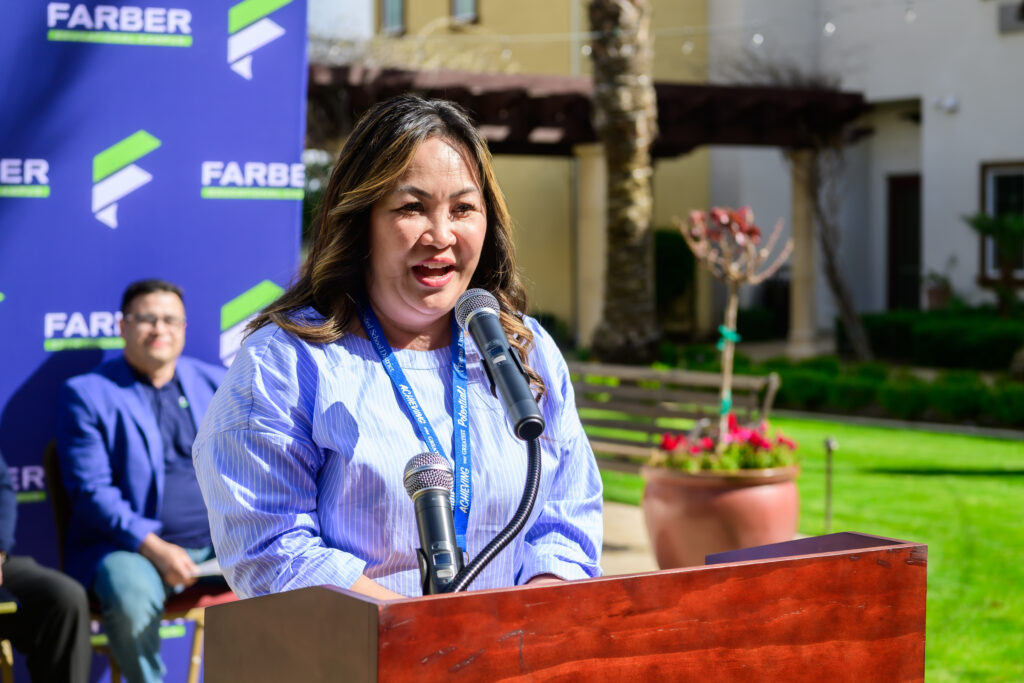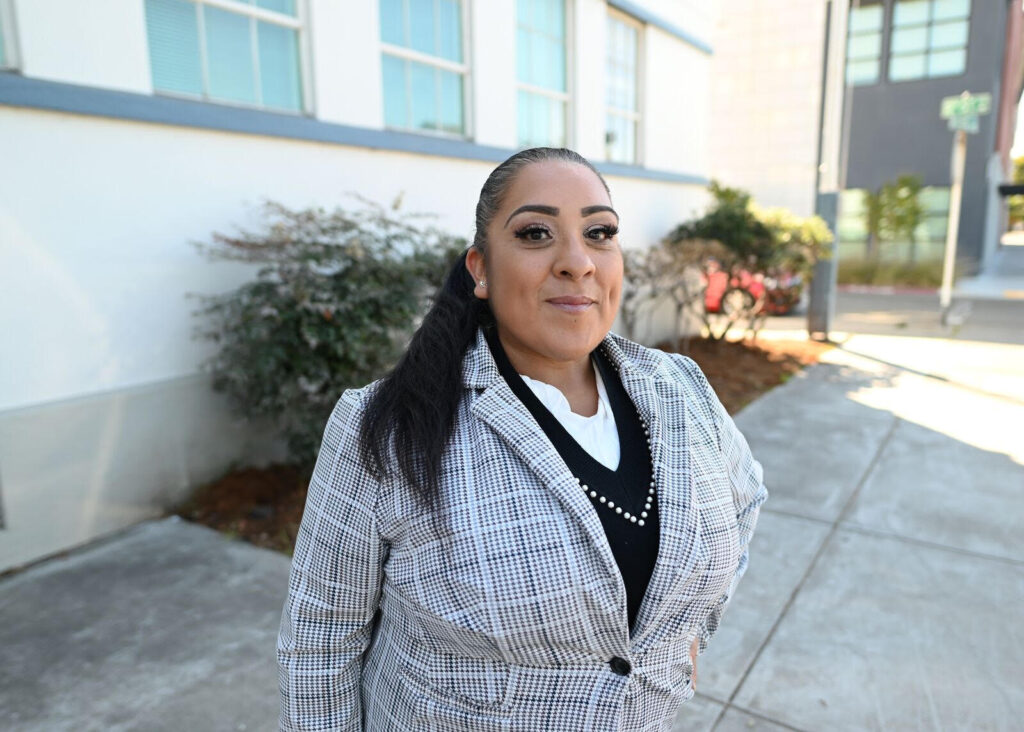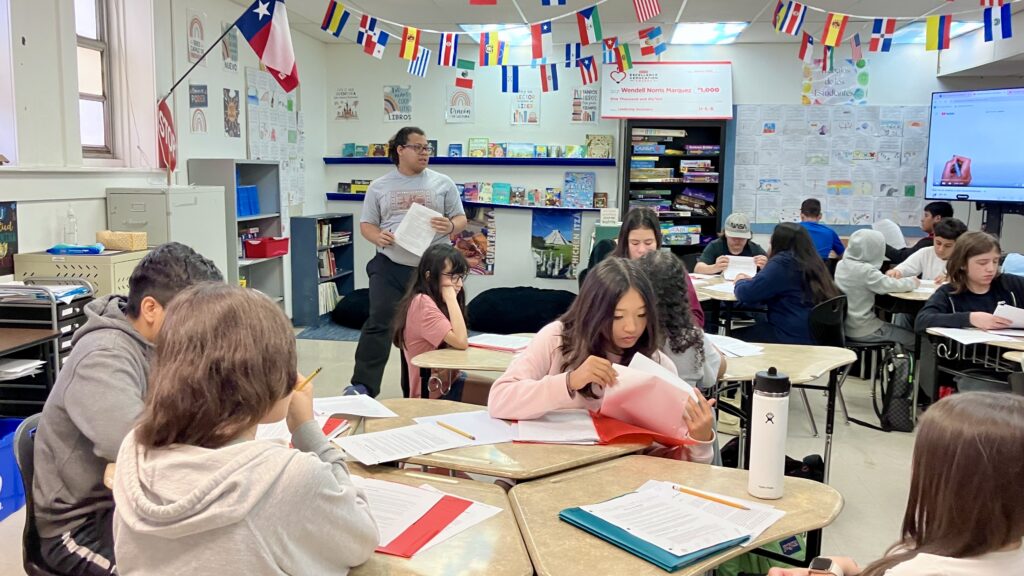
Fresno Unified Deputy Superintendent Misty Her.
Credit: Fresno Unified / Flickr
The Fresno Unified school board on Friday appointed Misty Her, the district’s deputy superintendent, to lead the district on an interim basis while the board conducts a national search for someone to fill the permanent role.
The decision came after closed-session discussions at a Monday meeting and during special board meetings about the interim position on Wednesday and Friday.
As interim superintendent of California’s third-largest district, Her becomes the nation’s highest-ranking Hmong education leader and brings stability that the district needs, board members said at the news conference after Friday’s meeting.
Her appointment, which becomes effective on Wednesday when her contract is approved, allows Fresno Unified to “maintain momentum” without rushing the search process, board President Susan Wittrup told reporters.
“We need an interim superintendent who will continue to implement the important initiatives that the district is pursuing and who will ensure that we are fully prepared for the first day of school in the fall,” Wittrup said.
The school board said on April 10 that it would consider both internal and external candidates in the search for a new superintendent — a change in the search process that was spurred by weeks of community outrage.
The outrage followed a March 20 closed-session decision to interview internal candidates before deciding how to proceed with the search process. Details of the 4-3 decision were leaked to the media, sparking community anger that pushed the board to reverse course on April 3 and postpone already scheduled interviews.
After the April 10 decision, the search process was supposed to include community participation with the board providing additional updates at other meetings. Although board members met on April 24 for a regularly scheduled meeting, the board president didn’t disclose a timeline in a seemingly stalled process, The Fresno Bee reported.
Superintendent Bob Nelson announced his resignation on Jan. 22; his last day is July 31. The school district confirmed in a media release about Nelson’s resignation that Her would be named interim superintendent, but naming her on Friday is a move that most likely won’t restore community trust, according to Fresno Teachers Association President Manuel Bonilla.
“The FUSD school board continues to erode community trust with its handling of the superintendent search process,” Bonilla said in an emailed statement following the announcement. “The board’s decision to announce the appointment of Interim Superintendent Misty Her during the Friday News Dump period, following two abnormally scheduled special meetings that effectively sidelined public input, undermines transparency and further erodes community trust in the superintendent selection process.”
So far, the search process has been engulfed in community angst about an alleged lack of transparency and accusations that the process had been tainted by politics, EdSource reported. District employees at the center of the search, including Her, even faced racial harassment and threats.
Reflecting on the last few weeks, board member Elizabeth Jonasson Rosas said on Friday that the board is now where it needs to be — united to find its next superintendent who can advance student achievement. Most Fresno Unified students failed to meet the state standards in 2023.
The district leaders did not answer questions at Friday’s news conference but will host another one Wednesday before the board’s regularly scheduled meeting.
“Moving forward, the board must demonstrate a commitment to inclusivity and transparency in its decision-making processes,” Bonilla said. “We urge the board to prioritize meaningful community engagement and input in the selection of the next superintendent to rebuild trust and ensure accountability to all stakeholders.”
Nelson, board members say the appointment is what Fresno Unified needs
The board’s unanimous decision to appoint Her is what the Fresno Unified community needs, district leaders said.
“There is nobody I am more confident in leading our Fresno Unified family through this transitionary period than you,” Nelson said, addressing Her, at the Friday special board meeting. “You have never apologized about your relentless focus on student achievement, and that’s what we really need at this time.”
Her’s entire 30-year career has been in Fresno Unified where she’s held many positions, including a bilingual instructional aide, a school leader and deputy superintendent in 2021.
“Most important to me,” trustee Veva Islas said, “Misty’s lived experience allows her to relate to our disadvantaged students that no other superintendent can.”
Born in a prisoner of war camp in Laos, Her’s family escaped to a refugee camp in Thailand after the end of the Vietnam War before eventually coming to the United States and settling in Fresno when she was a young child, Fresno Unified said in an emailed statement. That firsthand experience and her understanding of the challenges faced by students from diverse backgrounds have shaped her into a passionate and effective leader, the school district stated.
Based on 2022-23 state data, more than 92% of Fresno Unified students are minorities, and according to 2023-24 district data, 88% of students are living in disadvantaged circumstances.
The school board, which has yet to lay out a timeline, share a job description for the next superintendent or select another search firm to lead the search, will update the community about the national search at its May 8 meeting.
The board is “committed and unified” to not only find the next superintendent but to support Her in the meantime, board members said.
“Fresno Unified is my life. From elementary school through more than three decades as an employee and a current Fresno Unified parent, my commitment runs deep,” Her said in the district’s statement.
“I am proud to serve our students and their families as one of their own,” she said. “Our Fresno Unified family deserves a leader who is a successful Fresno Unified graduate, is committed to this community and truly believes in our students and staff.”





)




